The Battle of Waterloo
By Paul Comben
Imagine the following:
Two men are sitting at opposite ends of a table – one, the larger fellow, is pretty useful with his fists; the other has an old-style dueling pistol which he has not yet got out of its box. The larger man is fully aware that his smaller adversary intends to kill him, but as it is, he just carries on sitting there whilst the pistol is retrieved, loaded and primed, and then pointed in his direction. Finally, with the larger man still sitting there, doing nothing to defend himself, the smaller man levels the pistol, takes aim, gives fire, and puts a nasty wound in the arm of his adversary.
 Yes, it all sounds distinctly odd, but this essentially what is meant to have happened, in allegorical terms, when the French “Grand Battery” at Waterloo was first established, and it is how many Waterloo games have chosen to represent events. But the thing is, not only does it fly in the face of actual historical record, it also runs totally contrary to plain commonsense. Nevertheless, there it is, in so many books, and in so many games: the French nonchalantly moving, (or have already moved), several score of artillery pieces to within a few hundred yards of Wellington’s line, and there, with their own infantry and cavalry further away than Wellington’s nearest forces, they park up their wagons and caissons, peer through their telescopes, adjust the guns, bring up some ready ammunition; and while all of this going on over a protracted period, the Anglo-Dutch forces do absolutely nothing.
Yes, it all sounds distinctly odd, but this essentially what is meant to have happened, in allegorical terms, when the French “Grand Battery” at Waterloo was first established, and it is how many Waterloo games have chosen to represent events. But the thing is, not only does it fly in the face of actual historical record, it also runs totally contrary to plain commonsense. Nevertheless, there it is, in so many books, and in so many games: the French nonchalantly moving, (or have already moved), several score of artillery pieces to within a few hundred yards of Wellington’s line, and there, with their own infantry and cavalry further away than Wellington’s nearest forces, they park up their wagons and caissons, peer through their telescopes, adjust the guns, bring up some ready ammunition; and while all of this going on over a protracted period, the Anglo-Dutch forces do absolutely nothing.
Really?
Let me quote from Gareth Glover’s recent book on the battle “Waterloo – Myth and Reality”, where, referring to the initial deployment of what is called “The Grand Battery” he says:
“However, to move so many guns forward without infantry protection would have been military madness, leaving the artillery vulnerable to being overwhelmed. No such manoeuvre is described by any eyewitness, nor do any of d’Erlon’s infantry subsequently describe having to advance through the mass of tumbrils and associated wagons, or indeed through the batteries themselves.”
But this is precisely what one sees in game after game (Fallen Eagles and Le Retour de l’Empereur being but recent examples), and also what was in many earlier book accounts of the battle. Indeed, even some more recent accounts have followed this line of narrative.
In Robert Kershaw’s “24 Hours at Waterloo” he writes:
“French artillery caissons had been seen struggling through the mud up onto the intermediate ridge ever since eleven o’clock.”
To support this view, Kershaw refers to a quote from Desalles, the I Corps artillery commander, who, after the battle, spoke of being told by Ruty, the army’s artillery chief, to find a more forward position for the guns. Kershaw specifically refers to this quote (it is in other books as well) as it is presented in “Waterloo: The French Perspective” by Andrew W Field. But as Field points out, no eyewitness:
“tells us when this move took place.”
 Of course, throughout the Napoleonic Wars, the French had had the habit of using their artillery aggressively, and this had often meant massing guns at very short range to blow holes in the enemy line – Lützen is a pretty good example of this. But it is one thing to deploy guns well forward when a battle is “evolved,” and when supporting forces are close by; and it is quite another to have a mass of vulnerable clutter parking itself between the lines before battle has even commenced, and thus being in no fit state to defend itself until everything has been unpacked and brought to readiness.
Of course, throughout the Napoleonic Wars, the French had had the habit of using their artillery aggressively, and this had often meant massing guns at very short range to blow holes in the enemy line – Lützen is a pretty good example of this. But it is one thing to deploy guns well forward when a battle is “evolved,” and when supporting forces are close by; and it is quite another to have a mass of vulnerable clutter parking itself between the lines before battle has even commenced, and thus being in no fit state to defend itself until everything has been unpacked and brought to readiness.
But let us just assume, for the time being, that this is what Desalles did, with the consequence, that at one o’clock, about sixty French cannon began pounding Wellington’s centre and left from a range of about six hundred yards. Without doubt, that number of batteries (we are talking about I Corps’ four divisional batteries, plus its own 12 pdr battery and the 12 pdr batteries from II and VI Corps) would have filled the length of the intermediate ridge, and their impedimenta would have extended in a dense jam for some distance behind. Once firing, the guns were no longer defenseless; but what then happened when the French infantry began its advance? We know that the bulk of d’Erlon’s infantry went forward in a bizarre and archaic formation – each battalion of the division in a three rank line, and the battalions of each division arrayed one behind the other. This gave the divisions a frontage of about 150 men, and a depth of some twenty-four ranks. According to those book accounts that have the divisions advancing directly forwards, and thus picking their way through the gun line, these cumbersome formations would have needed to negotiate wagons and caissons, tethered horses, and the artillery itself, before finally sorting themselves out from the midst of what would have been, in modern parlance, “a target-rich environment.” Not only that, the artillery would not have been able to fire at all during the progress of this military “excuse me.”
So what is the alternative?
Let us return to Desalles. In Tim Clayton’s book, “Waterloo: Four Days That Changed Europe’s Destiny” reference is made to the conversation between Ruty and Desalles, but it is stressed here that the movement to the intermediate ridge was meant to take place “after d’Erlon’s infantry closed on the allied line…”
Clayton’s notes for this passage say:
“Some authors believe the Grand Battery started on the forward line, but at this stage it would have been desperately exposed and vulnerable, far in front of the French infantry and outflanked by Papelotte and La Haye. Shaw Kennedy* confirms that the Grand Battery moved to the forward ridge but does not say when.”
* A soldier at the battle.
This question of timing is key to several issues surrounding just where these guns were at what precise moment. These issues include:
- Just what effect these cannon could have firing at extreme range from the more southerly ridge line running slightly northeast from La Belle Alliance?
- Whether the bulk of d’Erlon’s infantry actually swerved around the ends of the artillery line on the La Belle Alliance ridge to avoid the mass of wagons etc. and also to keep out of the line of fire?
- In what state (and where) the charging British cavalry caught the French batteries during d’Erlon’s repulse?
In “The Battle: A New History of the Battle of Waterloo” by Alessandro Barbero, the author writes:
“However, there was such a great distance between the mouths of the guns and the positions they were to attack that the French cannonades seemed more likely to affect enemy morale than anything else. At a thousand yards, not even 12-pounders would fire their projectiles with any great accuracy, while firing 6-pounders at that distance was equivalent of shooting at random.”
That the French actually did open their bombardment of Wellington’s left from such a distance implies that these guns must have been able to produce some advantage, and Barbero, like Clayton, leans towards the psychological consequence over the purely material.
Barbero again:
“Besides, the task of the Grande Batterie was, above all, to achieve a psychological effect; that is clear from the emperor’s order to Desales (his spelling), in which the latter is expressly enjoined to open fire with all his guns at the same moment, “to astonish the enemy and shake his morale.”
For our hobby, this is important not just because of where key units of the French army get sited in relevant scenarios, but what effect, in game terms, artillery can be given when firing at such ranges. As things stand, I am struggling to think of that many Napoleonic battle games of the requisite scale where artillery can fire out to these distances, let alone get any kind of combat result. It is not that designers dismiss the ability of a cannon to fire out to ranges of around 1,200 yards; it is more a case, by my reading, that historical modes of practice often lead designers to different conclusions.
This is Richard Berg writing in the rules for his design The Battles of Waterloo:
“The range restrictions reflect artillery doctrine, rather than absolute maximum range “capabilities” of these guns. Guns were rarely (try never) fired at distances of more than half a mile…which is about what four hexes represent here, give or take a few spare yards. The 12-pounders had a doctrinally effective range of about 250 extra yards, so they get one additional hex in range.”
For most battle situations this is all reasonable argument…but there is always an exception or two. Saint-Maurice, commander of the Guard artillery, was killed by an allied cannonball whilst discussing artillery deployment with Napoleon – and that is unlikely to have occurred within 800 yards of the enemy line. But beyond that, history does provide examples of deliveries of projectiles proving to have an effect even when they are not, by many definitions, capable of being “effective.” At Agincourt, after the long period of standoff, Henry’s archers advanced to extreme bow range and loosed several volleys at the French. The one appreciable result of this was certainly psychological, as it goaded the French knights into the attack. Furthermore, although a strong case can be made that the French armour was largely impervious to longbow penetration, repeated heavy strikes were quite sufficient to topple any man struggling in a press of fellows on a muddy field, and then asphyxiation or a blow from an English hand weapon did the rest.
Back at Waterloo, accounts have long recorded how even innocuous-looking cannonballs, rolling along the ground, were capable of removing a lower limb. Even the draft of one of these projectiles could kill or cause serious harm: de Lancey, one of Wellington’s key staff subordinates, may well have received his mortal wound from a ball supposedly past its “effective” range, and the grisly hurt he received may have been produced simply by the “rush” of the projectile as it flew/bounced close by.
Nevertheless, as said earlier, the effect of extreme range artillery fire was likely to be at least partly psychological, and was capable of having an effect even before a single gun had been fired. The expectation of receiving the attentions of a formidable artillery, slowly massing and taking aim, was difficult enough even for seasoned troops to deal with.
Lieutenant John Kincaid wrote of the distant ridge:
“It had hitherto been looking suspiciously innocent, with scarcely a human being upon it …but innumerable black specks were now seen taking post at regular distances in its front, and recognizing them as so many pieces of artillery, I knew from experience, although nothing else was yet visible, that they were unerring symptoms of our not being destined to be idle spectators.”
Game designs have often accounted for the looming presence of Napoleonic cavalry, and this before a charge has been fully commenced. It is hard to dismiss the notion that deployed artillery can cause trepidation upon an enemy before the first thunder of those same guns. Troops of lesser quality, or those who sense that they are utterly bereft of shelter, may well experience a faltering of resolution, which will be exacerbated once fire is delivered. However, I do not know of any game that caters for morale and function effects simply for being within the sights of massed cannon.
The situation is even more pronounced when one considers the distances game artillery can throw destruction out to. Again, I do not know of any game where French artillery on the La Belle Alliance ridge can reach Wellington’s line; but the eyewitnesses tell a somewhat different story when it comes to actual events.
Writing of this first bombardment, Cavalié Mercer, in his Waterloo Journal, recorded a fellow battery commander (Lloyd) saying to him: “for God’s sake come and assist me or I shall be ruined.” Clayton also cites the disabling of three of the guns of Ross’s battery, a source derived from Siborne’s “Waterloo Letters” – with the proviso that one of the lost guns might have been from another, adjacent battery. Certainly one dramatic effect of this supposedly unrealistic long range bombardment was a number of hits on ammunition caissons, causing major explosions and a loss of supply Wellington’s batteries could ill afford.
As for the effect on the infantry, this is Robert Kershaw quoting Edmund Wheatley of the King’s German Legion:
“The first man who fell was five files on my left. With the utmost distortion of feature he lay on his side shriveling up every muscle of his body, he twirled his elbow round and round in acute agony, then dropped lifeless.”
One does have to exercise caution with such accounts, if only because any observed death caused by an artillery round is likely to be unnerving and gruesome, but that does not necessarily mean it is a predominant experience at a particular moment in a battle. Barbero offers some interesting accounts of what was happening to Wellington’s left during this pre-assault phase as the rounds flew:
“An officer in Picton’s division later recalled, “The greater part, fortunately, went over our heads, carrying one off here and there. This fire was much too high; the old hands said it was meant to intimidate, as usual.”
And of the effect on Wellington’s artillery in the area:
“With mounting uneasiness, the officers of the Allied infantry watched artillery caissons struck by enemy cannonballs blow up before their eyes; as the smoke cleared, they could see that some batteries, running short of ammunition, were harnessing horses to limbers and preparing to clear out of that inferno.”
As something like an educated guess, and I could be wrong here, the balls flying over prone soldiers on the reverse slope were more likely to be from the various corps reserve batteries (the 12 pdrs), whereas the 8 pdrs from the divisional batteries would at least have been able to reach the forward allied batteries and their caissons. From what research I was able to pick up on, the absolute maximum range of Napoleon’s “beautiful daughters” is given to be about 1,600 yards, and of the 8 pdrs, approximately 1,200 yards – but I would be hesitant to say that even these were the absolutes. Within such scope, if the 12 pdr batteries (of I, II and VI Corps) were deployed closest to La Belle Alliance (highly likely given where these batteries were at the battle’s commencement), with the divisional pieces of I Corps then following the ridge on its northeastern course, just about everything eyewitnesses said was under fire would certainly have been in range.
In all, it is hard to escape the feeling that our hobby’s Waterloo games have long missed some key features and realities of what concentrated artillery could do at very significant ranges, and has dismissed capabilities that should be included by some means or another. Rounds were clearly arriving on Wellington’s ridge with the power to do actual physical harm as well as inflict a degrading of morale in some units. But now, let us look at how the French assault divisions approached the Anglo-Dutch line, something that also offers testimony on the original siting of these batteries, as well as directly questioning any viable ability of formed infantry to progress through a substantial battery line.
I will begin here by referring to Mark Adkin’s “Waterloo Companion.” On page 298 there is a map/diagram showing the deployment of the French artillery prior to the assault by the infantry of I Corps. Although this diagram shows the batteries on the intermediate ridge, there is value in the fact that the main purpose of the graphic is to show the complete battery equipage extending the length of the battery line, and to a depth of several hundred yards. Incidentally, Adkin acknowledges in his accompanying text that the “Grand Battery” looked exposed on that forward ridge, but argues that the risk was mitigated by dint of the fact that the French were the ones who were going to attack, whereas Wellington’s army was assumed to be in a totally defensive posture.
I cannot say I find that argument all that convincing – two hours were to pass from the artillery supposedly first moving forward to the intermediate ridge, and their infantry then following them forward; hardly a sign in itself that the artillery was secure because of some prolonged working-up of belligerent airs many hundreds of yards to the rear. Furthermore, if the garrison of La Haye Sainte was that close to the guns, it is possible the nearest French crews would have been picked off irrespective of defensive postures; and if Uxbridge had got a sniff of such a target as a mass of unprepared French cannon, he would certainly have gone for the kill. Ironically, in an earlier map panel, Adkin shows the approximate position of the allied skirmish line at the start of the battle – close enough to the intermediate ridge, especially at its eastern portion, to have made the notion of blithely setting up the guns there very difficult to envisage.
And just before we go back to the actions of the advancing divisions of I Corps, it is surely relevant to the whole issue of battery siting that these guns, supposedly so close to the garrison of La Haye Sainte, a location the French made repeated attempts to capture, never fired a shot at it. Why? If they were that close they might well have had the walls blown in in a matter of moments; only they did not – perhaps because they were never actually that close after all?
When the French infantry did advance, which was at about 1:30pm, it is a fallacy that they then marched through their own gun line. Quite apart from the available eyewitness accounts telling a different story altogether, we can simply bring plain commonsense to the matter. The infantry would have been put into their visually impressive, though impracticable, assault formations before setting off, and if the next thing they did was proceed through their own deployed batteries, the formations they had only just been put into would have been in a state of complete disarray, requiring a prolonged “sorting-out” right in front of their own guns. Following such a line of advance, with its delays and the infantry’s physical presence right in the line of fire of their own pieces, they would have prevented their cannon from firing through the better part of their progress towards the enemy line.
It is therefore far from surprising that we have eyewitnesses that speak of the French doing something else. Tim Clayton offers several such witnesses, who are worth quoting/referring to at a little length:
“Carl von Rettberg, who commanded the allied artillery battery that was best placed to view the movement afterwards made a sketch map indicating that most of the French infantry marched not through the guns, but round their eastern flank, concealed from sight for most of their approach march by the high ground on which the guns stood. The map published in 1815 with An Account of the Battle of Waterloo…by a British Officer on the Staff also showed French infantry moving round rather than over the ridges on which the guns stood.”
Also, via Clayton, is this recollection from the Prussian Liaison Officer, Müffling:
“About two o’clock their suddenly appeared four large masses of infantry, which having formed behind the heights of La Belle-Alliance towards Papelotte, advanced upon the position, marching en echelon from the left, its left being directed towards La Haye Sainte.”
Rettberg is further sourced with regard to how the French marched past his battery’s flank:
“Without paying the slightest attention to the British cavalry in their rear.”
In all likelihood, the westernmost of the four French divisions (Quiot’s) marched west of the Brussels road to avoid their own guns, whilst the other three swung around east of the gun line. It should be noted that going around the guns was not a quick “overtaking” manoeuvre, a matter of “nipping out and then going back in again;” rather, the infantry kept out of the line of fire for as long as possible, allowing the French cannon to maintain their bombardment until the infantry was virtually on top of Wellington’s line.
One other line of argument that is well worth presenting comes from Gareth Glover’s “Waterloo – Myth and Reality.” He takes the view that there may well have been no massed grand battery for this initial bombardment – essentially, the divisional batteries were with their divisions (and thus each several hundred yards apart), while the 12 pdrs, at least by my deduction, may have been gathered as two dozen guns close to the Brussels road. It is hard to be definitive on this, but at the least it is possible to say that even if this was the deployment, it would not have negated the desire of the assault’s leaders to avoid blocking the line of fire, although passing through the gun line would have been that much easier. On the other hand, if the initially allotted batteries had been together, they would have formed a front of about seven hundred to eight hundred yards, and that with a serious amount of stuff behind them. For my part, I tend to the belief that the batteries were grouped together, as Desalles did look to appoint capable officers to help co-ordinate the fire, which would have been demanding in the extreme had the batteries been that spread out.
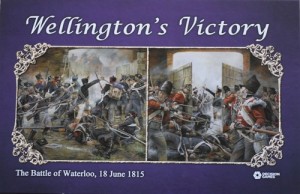 Returning to the matter of the artillery’s vehicles, I only know of one game system that imposes a truly realistic sanction on infantry/cavalry moving through an artillery position. That is in the La Bataille series, which partners the “working end” of an artillery unit with another counter representing the train. The rule looks highly effective, but I would need to hear from dedicated La Bataille players to get an idea as to how supported the rule is (I only found both it and the
Returning to the matter of the artillery’s vehicles, I only know of one game system that imposes a truly realistic sanction on infantry/cavalry moving through an artillery position. That is in the La Bataille series, which partners the “working end” of an artillery unit with another counter representing the train. The rule looks highly effective, but I would need to hear from dedicated La Bataille players to get an idea as to how supported the rule is (I only found both it and the 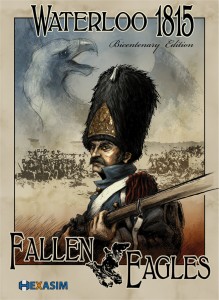 necessary extra counters in the more recent version of the Quatre Bras game). As a comparison on a similar scale, the newest version of “Wellington’s Victory” does limit “mixed” stacks, but elsewhere, and at a different scale, in the recent games, (Le Retour and Fallen Eagles) it is simply a matter of different forces counting differently towards an overall stacking total.
necessary extra counters in the more recent version of the Quatre Bras game). As a comparison on a similar scale, the newest version of “Wellington’s Victory” does limit “mixed” stacks, but elsewhere, and at a different scale, in the recent games, (Le Retour and Fallen Eagles) it is simply a matter of different forces counting differently towards an overall stacking total.
In “The Battles of Waterloo” the designer makes a general rule of one unit per hex, but among some exceptions, permits an infantry unit (these are brigades) to stack with an artillery unit (several batteries) without preventing the artillery unit from firing. This does not seem especially feasible – it being one thing to simply occupy space, and another to be able to function in that space. Trying to fire and maintain a battery line with thousands of infantry pressing in might be compared, albeit somewhat colourfully, to trying to cook thirty curries in an Indian restaurant’s kitchen whilst fifty or sixty people who are nothing to do with the process stand around looking at the pots and pans.
Before looking at the final issue, as to where and with what effect the British cavalry caught the artillery of the Grand Battery, I want to make a particular mention of the Napoleonic Brigade Series, which stands as proof that in wargaming, as in much else in life, you never quite get to have all the cake and eat it. Waterloo has not featured in the series, but its system has just about all the mechanisms to do a very good job with the battle, and within the context of this article, there are three things of note:
- Artillery is endowed with the sort of range other games should be crying out for – the fire may be weak, but you can deliver a bombardment to ranges of close to a mile.
- As a sort of “nearly there” feature with regard to how different qualities of unit face incoming fire, in this system the higher morale units (those rated A or B) have the potential to endure artillery hurt via an extra positive bonus to any check.
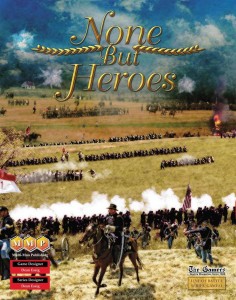 But the last slice of cake will not be coming our way, as the system does allow for mixed unit stacking, and that without any form of dire consequence. However, I believe I am right in saying that Dean Essig’s most recent work, “None But Heroes” and “Last Chance for Victory” keeps artillery and infantry well apart. Yes, it is a different scale and a different subject to NBS, but an interesting evolution nevertheless.
But the last slice of cake will not be coming our way, as the system does allow for mixed unit stacking, and that without any form of dire consequence. However, I believe I am right in saying that Dean Essig’s most recent work, “None But Heroes” and “Last Chance for Victory” keeps artillery and infantry well apart. Yes, it is a different scale and a different subject to NBS, but an interesting evolution nevertheless.
So when did the artillery advance? Given that the infantry was keeping out of the line of fire for the longest possible period, it rather follows that the batteries would not cease fire and begin limbering until they had no more viable target areas. This infers that most, if not all the batteries, would not have made ready to advance until d’Erlon’s infantry was ascending towards the Ohain road.
There are two other factors to consider here, one of which does have a certain amount of game relevance – getting deployed guns to move again. It was apparently part of Desalles’ concerns during his conversation with Ruty that it was always dangerous, and often undesirable, to move guns in the middle of an action. The La Bataille series does make a feature of this, though it is fair to say that the reasons for moving or not moving must vary depending on battle, nationality, doctrine and context. La Bataille gives the French a better chance of moving batteries already deployed, as it was very much part of their ethos to use guns aggressively…but certainly not stupidly.
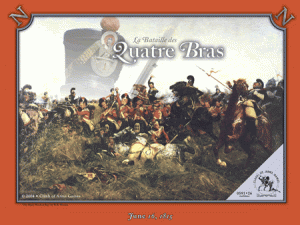 The other factor links to the first, in that d’Erlon’s initial objective was to drive back Wellington’s left and capture Mont Saint Jean. A part of the actual historical orders, and quoted in many places, including in David Chandler’s “Campaigns of Napoleon”:
The other factor links to the first, in that d’Erlon’s initial objective was to drive back Wellington’s left and capture Mont Saint Jean. A part of the actual historical orders, and quoted in many places, including in David Chandler’s “Campaigns of Napoleon”:
“The company of engineers belonging to the Ist Corps will hold themselves in readiness to barricade and fortify Mont-St-Jean directly it is taken.”
The interesting thing here is that guns advanced to the intermediate ridge would still have been well out of range of the likeliest targets following a successful initial attack by d’Erlon – if we go on most game-supplied range limits. There is also a tricky issue with line of sight, especially as we cannot readily picture some areas of terrain after the passage of two centuries and the construction of the Lion Monument. East of the Brussels road, things seem closer to the historical lie of the land, and certainly, given that French projectiles had already flown straight over the “Ohain” crest, it would hardly have been a bother to fire over it again to target allied units to the west of the Brussels road, or anything that still presented itself to the east.
But what about the timing? Even allowing for their circuitous route, d’Erlon’s infantry must have been closing in on Picton’s division by about 2pm. Just how long Picton’s men and their French adversaries exchanged fire and the threat of the bayonet before the British cavalry came through is difficult to judge, but it could not have been that long – Clayton’s chapter timings suggest ten to fifteen minutes. If most of the French batteries that were moving towards the intermediate ridge did not get going until close to 2pm, with about six hundred yards to cover there was precious little chance that much would have been set up and prepared by the time the cavalry approached. Besides, the last thing the gunners expected was to see the elite of the British heavy cavalry heading straight at them.
In all likelihood the British troopers who cut into the French batteries would have found some partly set up, and others still trailing up to the ridge. They certainly were in no position to defend themselves; in no better position, in fact, than if they had been setting up on that ridge to begin with, already almost within shot of the allied skirmish line and the garrison of La Haye Sainte, and furthermore, with a capable enough enemy cavalry commander on the prowl close by, who would not have let such an opportunity evade him.
There is one last issue I want to address, which is the experience of Bylandt’s brigade. In numerous books produced over many years, it was suggested that Bylandt’s forces had been left in a terribly exposed position as a deliberate sanction after their alleged failings at Quatre Bras, and that they were ready to run off the moment the French infantry got close.
Precious little of this, which has carried from one account to the next, is factually correct. Most obviously, there was little to criticize Bylandt’s forces for at Quatre Bras – they fought as well as any other allied unit at the battle, and were instrumental in slowing the French advance towards the crossroads by tenaciously holding the outpost line. Secondly, whatever Wellington’s flaws at any level, displaying callousness as to the fate of the soldiers under his command was not one of them. Deliberately placing a unit so far forward as a punishment might have been something Hood would have done, but not Wellington.
Beyond this punishment fallacy, two other things should be obvious:
- That Wellington at Waterloo could hardly have been certain that it was his left that would come under substantial artillery attack – and of course, his deployment favoured his right.
- That placing a unit in such an exposed position ran the risk of disrupting the operations of other units on that side of the field if the Dutch-Belgians subsequently routed back.
The other suggestion made in the histories is that Bylandt’s men suffered especially hard from the bombardment as they were just about the only enemy infantry the French gunners could see.
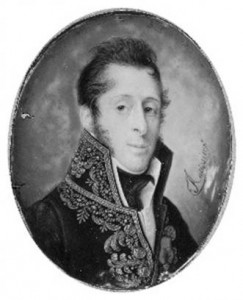
Willem Frederik count of Bylandt or Bijlandt (June 5, 1771 – October 25, 1855) was a Dutch lieutenant-general who as a major-general commanded a Belgian-Dutch infantry brigade at the Battle of Quatre Bras and the Battle of Waterloo. – Wiki
In all probability, of formed infantry within the field of fire, Bylandt’s battalions would have been the most visible, although not set as far forward as such accounts suggest.
Eyewitnesses already quoted have told of the havoc wreaked on the allied artillery batteries forward of the main infantry line, and if Bylandt’s men were anywhere near the guns, they would have been a target the French would not have overlooked. Just why they were positioned at that point, in terms of the distance to the other parts of their parent division, is a matter open to conjecture. One possible answer is that none of Wellington’s foreign contingents on the front line were left without a British unit close by, and in the case of this Dutch-Belgian brigade, it had the regiments of Kempt and Pack immediately to its rear. It might also have been the case that this unit, close to or on the sunken lane that was part of the Ohain road, bolstered a part of the line that was thin, what with the British brigades of Picton’s division having already been severely reduced by the battle at Quatre Bras, but that again is conjecture.
In any case, as Glover points out, by no means all of the Dutch-Belgian force routed away as the French closed. Many reformed after engaging with the French, and this just a little behind Picton’s brigades, where they stood for the remainder of the day.
Conclusion
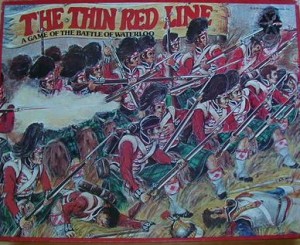 One thing I do want to stress is that none of the games I have referred to are bad games – not by any stretch of the imagination. Nevertheless, over a long period of years, including a number of games I have not referred to thus far, such as the original Wellington’s Victory and The Thin Red Line, the same artillery deployment and range issues have shown themselves. I cannot pretend this is not disappointing, because the eyewitness accounts are there, and the working models of conflict that wargames are, should present us with indicators that certain assumptions are not tenable.
One thing I do want to stress is that none of the games I have referred to are bad games – not by any stretch of the imagination. Nevertheless, over a long period of years, including a number of games I have not referred to thus far, such as the original Wellington’s Victory and The Thin Red Line, the same artillery deployment and range issues have shown themselves. I cannot pretend this is not disappointing, because the eyewitness accounts are there, and the working models of conflict that wargames are, should present us with indicators that certain assumptions are not tenable.
As I said in my recent Waterloo podcast contribution to Wargames to Go, there is nothing wrong with any designer wanting to feature some aspects of an event over others, and its often not a very good idea to try and fit every last piece of detail into any title. But this is different to games running the danger of getting things wrong, repeating possible/probable errors, and preventing players from doing things that actually occurred. In that regard, I am also puzzled as to what has happened to certain areas of battlefield terrain on the Fallen Eagles map. It is a simple topographical fact that the La Belle Alliance ridge is slightly higher that the intermediate ridge (you can see that today with a street view app), but in this game the ridge has ceased to exist other than a “hump” by the inn itself. What this means is that if I want to tinker with the game to produce the likeliest historical effect, I not only have to alter artillery ranges, but also ignore aspects of the game’s line of sight provisions. If I am being honest, given how much I was looking forward to getting this game, matters like these do tend to take the edge off the expectation because of the sense of opportunities missed and old errors creeping in.
What I would ask of designers is not to assume that the best-known battles in history are indeed entirely “known,” and that there is nothing that needs revision or an entirely new presentation. Looking at new texts offering a broader range of eyewitness accounts of Waterloo, here are some of the other things I was recently acquainted with for the first time:
- That a number of Wellington’s batteries were not able to replenish supplies after Quatre Bras, and were entirely out of ammunition in the early stages of Waterloo.
- That through the above and other factors, Wellington had very little functioning artillery left by Waterloo’s evening phase.
- That the centre of Wellington’s line might well have been pushed back to the farm of Mont Saint Jean in that evening phase.
- That “losses” caused by soldiers helping wounded comrades to casualty stations were very substantial – to both sides.
No doubt, we are not too far away from the very next Waterloo game (we never are!), so we will see what the future then holds regarding one of the most famous events of the past.


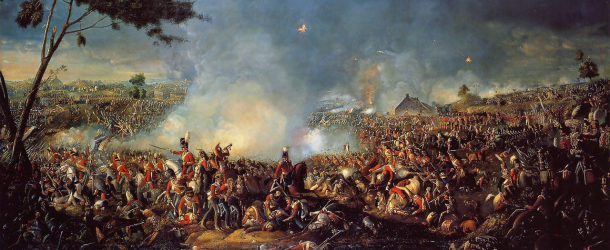
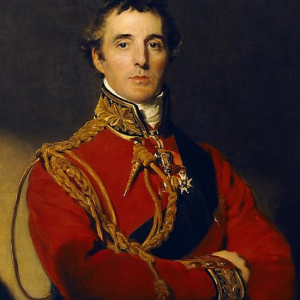
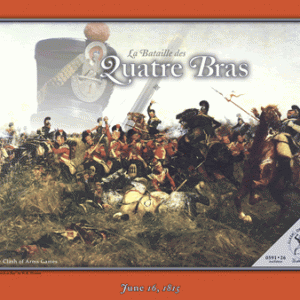

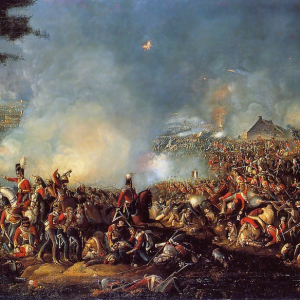
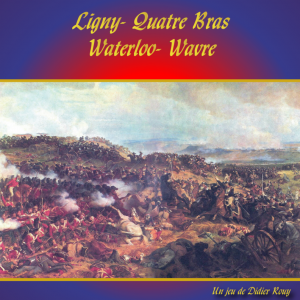
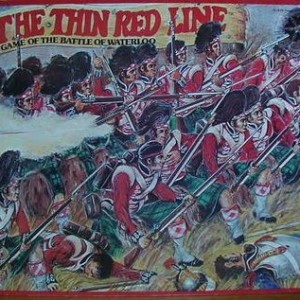
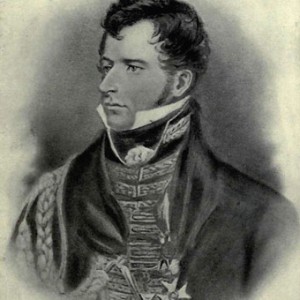
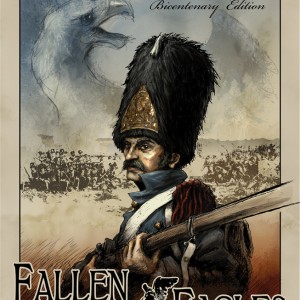

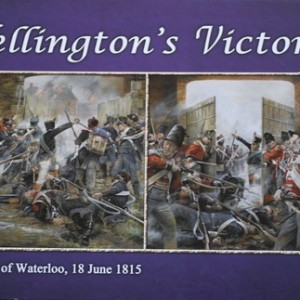
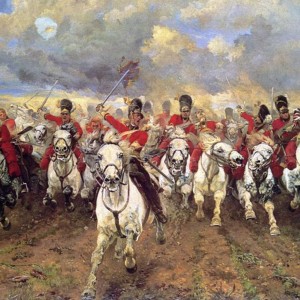
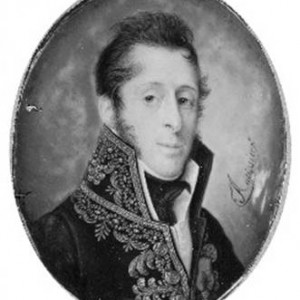



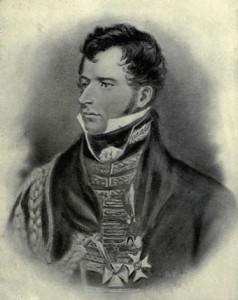






Pardon if this is so old to you that tne comment isn’t germaine…
I think there are several misconceptions in the discussion above, and I think I have a clear picture of what happened, why it made sense, how it can be readily implemented in e.g. orginial Wellingtons Victory or its Battleground series computer equivalent, and the like.
The grand battery formed on what you are calling the intermediary range, 600 yards from the allied position. That is why its early fire was quite effective and drove off a DB brigade exposed on the forward slope. British reports of most of the shot going high reflects the reverse slope positioning of the bulk of Pictons men, not extreme range of the fire. In addition, remember that each French battery included 2 howitzers which fired explosive shell rather than ball, at higher trajectories, able to search the area just past the crest but liable to overshoot when they tried to do so (fuse timings, etc).
Second, the description of finding a more forward position refers to the period after the French formed infantry passed the grand battery, which it all did to the battery’s right, aiming at the Picton crest line area not direct at Haye Sainte. The French plan was for the guns and skirmisher fire to clear the forward slope, D’Erlons then to cross the valley and establish himself at the base of Picton’s ridge. That sets up a mutual reverse slope position.
Then the French infantry was to take the crest, with skirmish fire and lines in infantry combat with Picton’s men. Once just past the crest, they were to hold there at beat off all counterattacks. The guns would be brought forward to the height thus gained, which the allies ahead of them thereby deprived of reverse slope cover. The grand battery woukd gradually reform on Picton’s crest, and sweep the allies back to Mount St Jean.
Thus, once the allies gave up the forward slope and the infantry fight was in progress for the crestline, the original grand battery position no longer had targets. In addition, its next planned tactical role was to turn consolidation on the crest into the firepower lever to drive the allies away from its opposite side. Therefore, portions of the grand battery limbered to move forward to the base of Pictons ridge, behind the French infantry, expecting them to gain their next positions for them along that crest.
That is the forward movement described.
Note that the British infantry did not defeat that plan. It was in firefight with the French infantry, as the French planned all along, and the struggle for the crestline was still going on and in doubt.
It was at that point that elements of the French formed infantry, almost certainly its second wave of brigades in each division, moved to deploy more widely and filled intervals in doing so,
That is the moment Uxbridge charged with the British heavy cavalry. He caught the French deploying and unable to get to square, and scattered the three nearest divisions by morale contagion as a result. They charged through elements of the grand battery precisely because those were coming forward already, to just behind the deploying second wave of D’Erlons formed infantry.
Next on why the grand battery position was safe an what else the French were almost certainly doing. Battlefield accounts do not discuss every movement of light infantry skirmishers; the pros take it for granted. The French would have sent skirmisher companies to the intended battery location first, and those would have stepped forward to screen it as it formed and unlimbered. They would be trading shots at a leisurely pace with the British lights around La Haye Sainte.
Then you need to understand that the whole of D’Erlons corps could stand on its ridge overlooking the valley, out of range of the British guns, but only a mile or so from the grand battery. That means they can walk to its support in a matter of 20 minutes. Any allied attack leaving its original positions is just giving up its reverse slope to tangle with those French in the middle of the field. Napoleon would be overjoyed if Wellington has made that mistake. The French skirmisher screens and the fire of the grand battery itself would only need to hold off the attacks for the space of 20 minutes. Less if it were cavalry sent, since then it would be French cavalry first sent to repel them. There was a full heavy cavalry corps supporting D’Erlons’ infantry plus his own lights.
The French plan was spund, there was no good instant counterattack riposte availabke vs the grand battery. If they had resisted the British cavalry and won the firefight fir the crest, it woukd have worked. The British outperformance was all downto Uxbridge’s excellent timing and the splendid “boxcars” results from his charge.
Hello Jason
I must admit I was very surprised when I first read the alternative theory as to where the “Grand Battery” first fired from – this would have been in Barbero’s book. However, as I thought about it, and saw the eyewitness accounts cited in the works by Tim Clayton and Gareth Glover as well as Barbero, the more it made sense.
I remain convinced that the cannon moving forward and deploying well before the French assault would have been suicidal. There is no mention anywhere, in any account, of the cannon being accompanied by anything. And even had the French sent skirmishers forward with them, a game model such as Wellington’s Victory suggests they would have been cut through by charging British cavalry just as they and the reasonably formed French battalions and cavalry were once Uxbridge let them loose later on.
Twenty minutes is a lot of time for bad things to happen. The repulse of the French Guard took less time than that once the firefight began. Had the French closely supported the guns moving so far forward so early, that might had been a different matter, though French infantry battalions would have had a mass of artillery clutter in front of them, and as we know French cavalry only got to the over enthusiastic British cavalry after the damage had been done.
Beyond that, there are those game models where artillery is given more range than in older designs, though no design I know of offers any provision for the psychological wear of the noise or simple presence of artillery.
Thanks for a thoughtful post.
Very best wishes
Paul